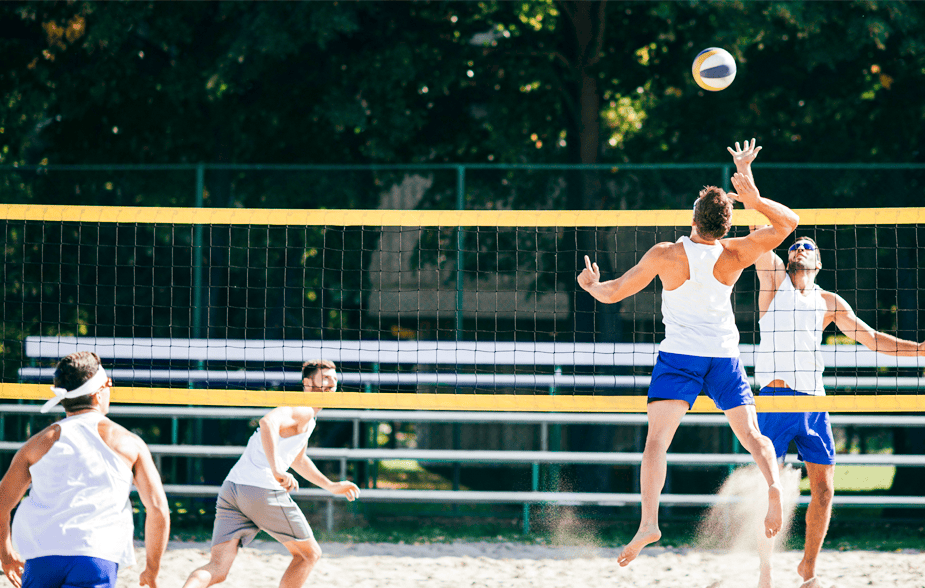This game requires agility, coordination, and teamwork. Originating in the United States in 1895, volleyball has grown into a global sport, played indoors and on beaches, and featured in the Olympic Games.
Possible Foot Injuries and Conditions
Volleyball players are prone to various foot injuries and conditions due to the sport’s demands for quick lateral movements, jumps, and rapid changes in direction.
Common foot injuries include:
- Ankle Sprains: A frequent injury that could happen when players land awkwardly after a jump.
- Plantar Fasciitis: Inflammation of the plantar fascia, a thick band of tissue located at the bottom of the foot. Patients with plantar fasciitis would experience heel pain.
- Stress Fractures: Repeated high-impact activities can lead to small cracks in the bones of the feet, particularly in the metatarsals.
- Achilles Tendinitis: Overuse can cause inflammation of the Achilles tendon, leading to stiffness and pain just behind the ankle.
- Blisters: Ill-fitting shoes and excessive friction can result in blisters, common in volleyball due to the constant movement.
- Toenail Injuries: Repeated trauma from sudden stops and starts can cause bruising or loss of toenails.
How to Protect Feet When Playing Volleyball
Preventing foot injuries in volleyball involves a combination of proper equipment, conditioning, and preventive measures:
- Proper Footwear: Invest in high-quality volleyball shoes that provide adequate support, cushioning, and traction. Ensure the shoes fit well.
- Warm-Up and Stretching: Focus on the calves, Achilles tendon, and plantar fascia.
- Strength exercises: Add foot and ankle strengthening exercises to your training routine. These can include calf raises, toe curls, and balance exercises.
- Foot Care Regimen: Trim toenails to prevent injuries from jamming against the shoe. Also, regularly check your feet for blisters, calluses, or signs of stress and address them promptly.
- Use Orthotics: Orthotic inserts can provide additional support and cushioning, especially for players with flat feet or high arches.
- Proper technique: Learn and maintain proper playing techniques to minimize unnecessary stress on the feet. ♦
Podiatrist newsletter article provided by LRW Media. Images provided by Unsplash/Jannes Glas.
